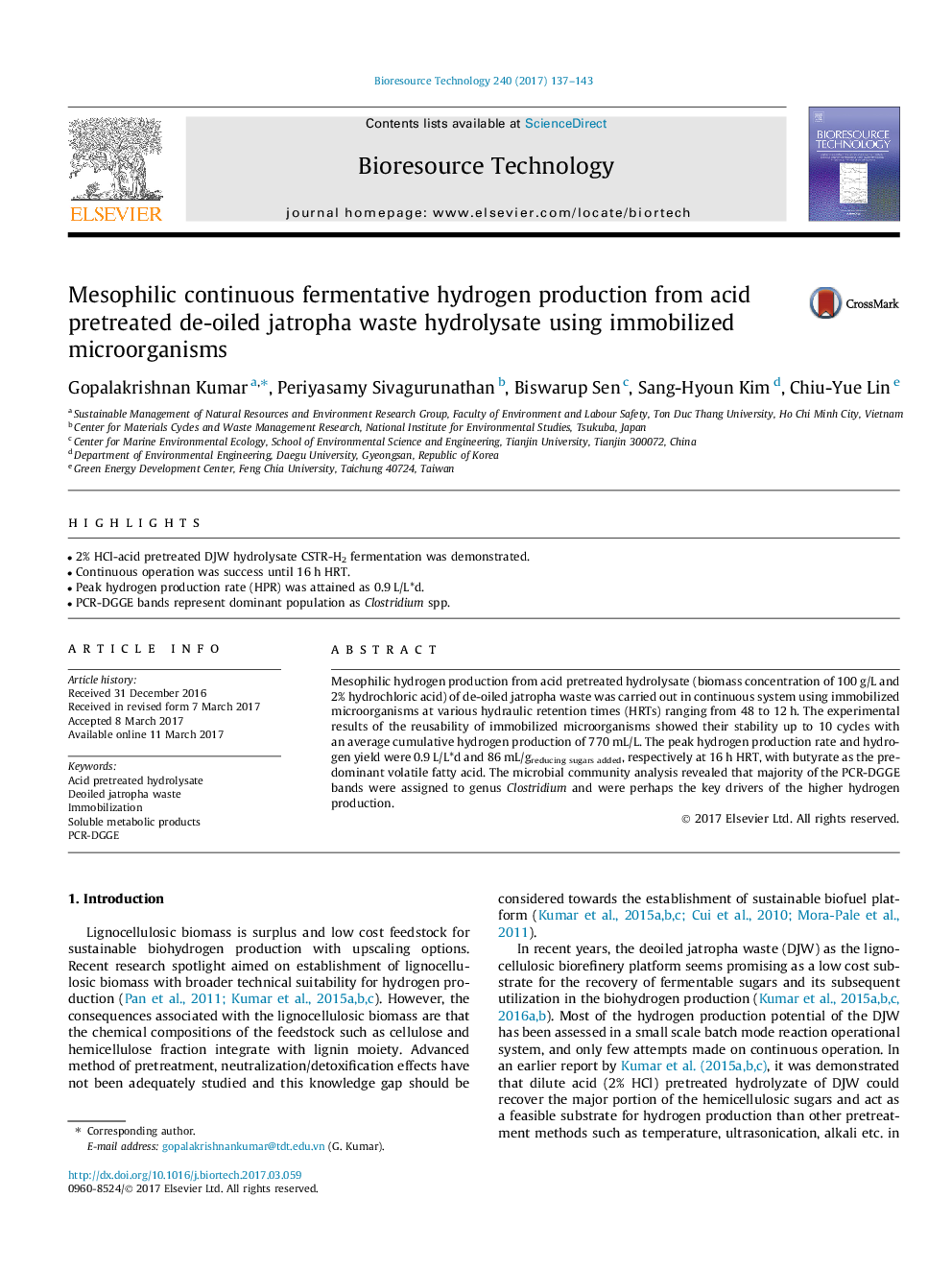| Article ID | Journal | Published Year | Pages | File Type |
|---|---|---|---|---|
| 4996736 | Bioresource Technology | 2017 | 7 Pages |
â¢2% HCl-acid pretreated DJW hydrolysate CSTR-H2 fermentation was demonstrated.â¢Continuous operation was success until 16 h HRT.â¢Peak hydrogen production rate (HPR) was attained as 0.9 L/L*d.â¢PCR-DGGE bands represent dominant population as Clostridium spp.
Mesophilic hydrogen production from acid pretreated hydrolysate (biomass concentration of 100Â g/L and 2% hydrochloric acid) of de-oiled jatropha waste was carried out in continuous system using immobilized microorganisms at various hydraulic retention times (HRTs) ranging from 48 to 12Â h. The experimental results of the reusability of immobilized microorganisms showed their stability up to 10 cycles with an average cumulative hydrogen production of 770Â mL/L. The peak hydrogen production rate and hydrogen yield were 0.9Â L/L*d and 86Â mL/greducing sugars added, respectively at 16Â h HRT, with butyrate as the predominant volatile fatty acid. The microbial community analysis revealed that majority of the PCR-DGGE bands were assigned to genus Clostridium and were perhaps the key drivers of the higher hydrogen production.
